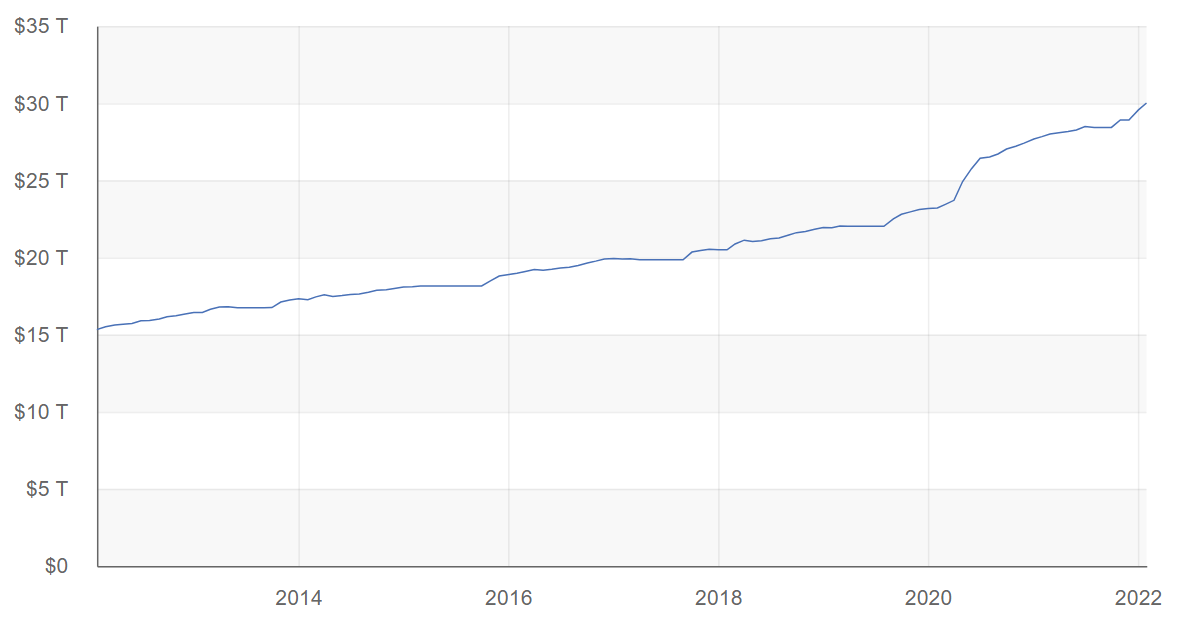The United States’s national debt exceeded $30 trillion for the first time, according to Treasury Department figures released on Tuesday.
The national debt is now about double China’s entire gross domestic product.
The sobering milestone comes after the federal government spent trillions of dollars to stimulate the economy and lessen the economic blow that came with the pandemic.
The country’s debt has increased by a whopping $7 billion since the end of 2019, just before the pandemic took hold.
CONGRESS AIMS TO COMPLETE U-TURN ON DECADES OF ECONOMIC RELATIONS WITH CHINA
“The milestone of $30 trillion in debt should be a giant red flag for all of us about America’s future economic health, generational equity, and role in the world,” said Michael Peterson, CEO of the Peter G. Peterson Foundation, a group that works to raise awareness about the debt.
“Our high and rising debt makes us less prepared for the next pandemic, less secure against future adversaries, less resilient to the changing climate, and less able to build the strong and inclusive economy that we all want for the next generation,” he added.
Most of the trillions of dollars that Congress spent sending out three stimulus checks to people, propping up businesses, and providing jobless benefits during the worst of the pandemic was financed through borrowing rather than being offset through revenues — a fact that raised the national debt to the $30 trillion mark much sooner than expected.

The gross national debt burden, which represents the debt the government owes its creditors, is greater than the U.S. economy. The national debt differs from the federal debt held by the public, which represents only the amount of government bonds held by the public and not the money the government owes itself. That number is lower, at $23.5 trillion.
News that the U.S. has crossed the $30 trillion threshold comes as the Federal Reserve unwinds its ultraloose monetary policies and prepares to raise the federal funds rate for the first time in years to combat soaring inflation.
Increased borrowing costs would make it even more difficult to finance the debt.
“It doesn’t mean a short-term crisis, but it does mean we are going to be poorer in the long term,” David Kelly, chief global strategist at JPMorgan Asset Management, told CNN. The U.S. owes a lot of its debt to foreign investors, particularly China and Japan.
CLICK HERE TO READ MORE FROM THE WASHINGTON EXAMINER
“That means American taxpayers will be paying for the retirement of the people in China and Japan, who are our creditors,” Kelly said.
During a meeting last week, top central bank officials indicated that the first in a series of interest rate hikes will likely come in March. Investors are pricing in several rate hikes this year, which could bring the federal funds rate to a range of 1-1.25%.





